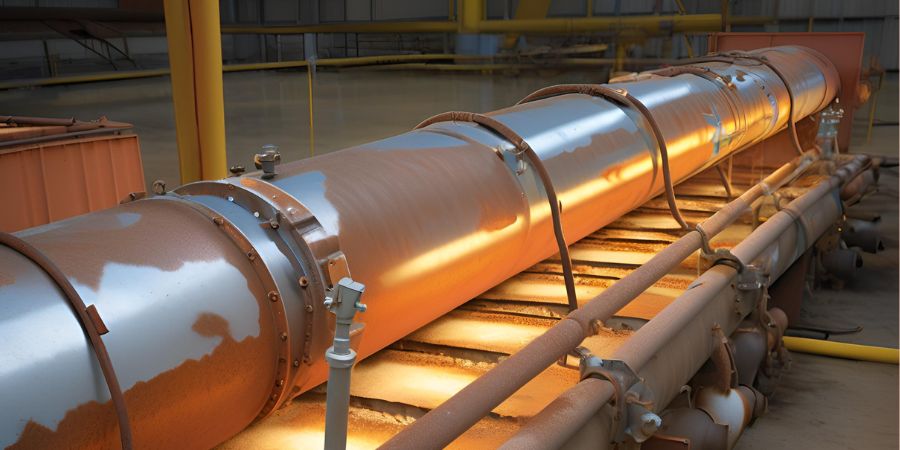Cathodic letting go is a term used to describe a phenomenon often observed in corrosion protection systems, particularly those employing cathodic protection (CP) techniques. This issue can occur under specific conditions, leading to the detachment of protective coatings or other materials. In this article, we will delve into the causes, effects, and potential solutions to cathodic letting go, ensuring you have a comprehensive understanding of this topic.
What Is Cathodic Letting Go?
Cathodic letting go refers to the loss of adhesion or detachment of protective coatings from metal surfaces subjected to cathodic protection. This process is typically related to the electrochemical reactions occurring at the metal–coating interface. The term is commonly encountered in industries like oil and gas, marine engineering, and infrastructure maintenance, where cathodic protection systems are widely used to prevent corrosion.
Why Is Cathodic Letting Go Significant?
The detachment of protective coatings undermines the effectiveness of cathodic protection, exposing the underlying metal to environmental factors and increasing the risk of corrosion. This issue can lead to:
- Increased Maintenance Costs: Repairing damaged coatings and addressing corrosion can be costly.
- Safety Hazards: Structural integrity may be compromised, posing risks to infrastructure and personnel.
- Operational Downtime: In industrial settings, failures related to cathodic letting go can disrupt operations.
Understanding and addressing this phenomenon is crucial to maintaining the longevity and reliability of assets.
Causes of Cathodic Letting Go
Several factors contribute to cathodic letting go, including electrochemical, material, and environmental influences. Below are the primary causes:
1. Overprotection
Excessive cathodic current can lead to hydrogen evolution at the metal–coating interface. The accumulation of hydrogen gas causes pressure buildup, weakening the adhesion of the protective coating.
2. Poor Adhesion of Coatings
Coatings that are improperly applied or have low adhesive properties are more susceptible to detachment. Factors such as surface contamination, inadequate surface preparation, or improper curing can lead to poor adhesion.
3. Environmental Factors
Harsh environmental conditions, including high humidity, temperature fluctuations, and exposure to corrosive chemicals, can degrade coatings over time, making them more prone to letting go.
4. Electrolyte Interactions
The presence of an electrolyte, such as water or soil moisture, facilitates electrochemical reactions that may weaken the coating’s bond with the metal substrate.
5. Mechanical Stress
Vibrations, mechanical impacts, or thermal expansion and contraction can exert stress on the coating, contributing to its detachment.
Effects of Cathodic Letting Go
Cathodic letting go has far-reaching consequences, especially in industries where metal structures are critical to operations. Here are the primary effects:
1. Accelerated Corrosion
When coatings detach, the exposed metal becomes vulnerable to corrosion, negating the benefits of cathodic protection.
2. Reduced Service Life
The lifespan of structures and equipment is significantly reduced due to increased exposure to corrosive elements.
3. Increased Inspection Requirements
Frequent inspections become necessary to identify and address areas affected by cathodic letting go, adding to maintenance workloads.
4. Compromised Structural Integrity
In severe cases, the structural integrity of metal components may be compromised, leading to potential failures and safety risks.
Preventing Cathodic Letting Go
Preventive measures can help mitigate the risk of cathodic letting go. Here are some effective strategies:
1. Optimize Cathodic Protection Systems
Ensuring that cathodic protection systems are properly designed and operated is essential. This includes:
- Monitoring Current Levels: Avoid overprotection by regularly monitoring and adjusting cathodic current.
- Periodic Inspections: Conduct regular inspections to identify signs of overprotection or coating damage.
2. Use High-Quality Coatings
Selecting durable coatings with strong adhesive properties can reduce the risk of detachment. Consider coatings that:
- Are resistant to environmental degradation.
- Have been tested for compatibility with cathodic protection systems.
3. Improve Surface Preparation
Proper surface preparation is crucial for achieving good adhesion. Techniques like abrasive blasting and thorough cleaning can remove contaminants and create a suitable surface for coating application.
4. Implement Environmental Controls
Minimizing exposure to harsh environmental conditions can protect coatings from degradation. This may include:
- Using protective enclosures.
- Applying additional layers of insulation or sealing.
5. Regular Maintenance and Monitoring
Routine maintenance and monitoring can help detect early signs of cathodic letting go and prevent further damage. Use techniques like:
- Visual inspections.
- Adhesion tests.
- Electrochemical monitoring.
Repairing Damage Caused by Cathodic Letting Go
If cathodic letting go occurs, prompt action is necessary to repair the damage and restore protection. Here’s how:
1. Assess the Extent of Damage
Begin by assessing the affected areas to determine the severity of the problem. This may involve:
- Visual inspections.
- Non-destructive testing methods.
2. Remove Damaged Coatings
Carefully remove the detached or damaged coatings using appropriate techniques, such as sandblasting or chemical stripping.
3. Reapply Protective Coatings
After surface preparation, reapply high-quality protective coatings that are compatible with the existing cathodic protection system.
4. Verify System Functionality
Once repairs are complete, test the cathodic protection system to ensure it is functioning correctly and providing adequate protection.
Future Trends in Addressing Cathodic Letting Go
Advancements in technology are paving the way for innovative solutions to prevent and manage cathodic letting go. Some promising trends include:
1. Smart Coatings
Smart coatings embedded with sensors can monitor adhesion and detect early signs of detachment, allowing for timely intervention.
2. Advanced Monitoring Systems
Real-time monitoring systems equipped with data analytics can optimize cathodic protection operations and prevent overprotection.
3. Improved Materials
Research into advanced materials with enhanced adhesion and durability can lead to coatings that are more resistant to cathodic letting go.
Conclusion
Cathodic letting go is a significant challenge in industries that rely on cathodic protection systems. By understanding its causes, effects, and prevention strategies, stakeholders can minimize risks and maintain the integrity of critical infrastructure. As technology continues to advance, innovative solutions are expected to further enhance the effectiveness of corrosion protection measures, ensuring a safer and more sustainable future.
